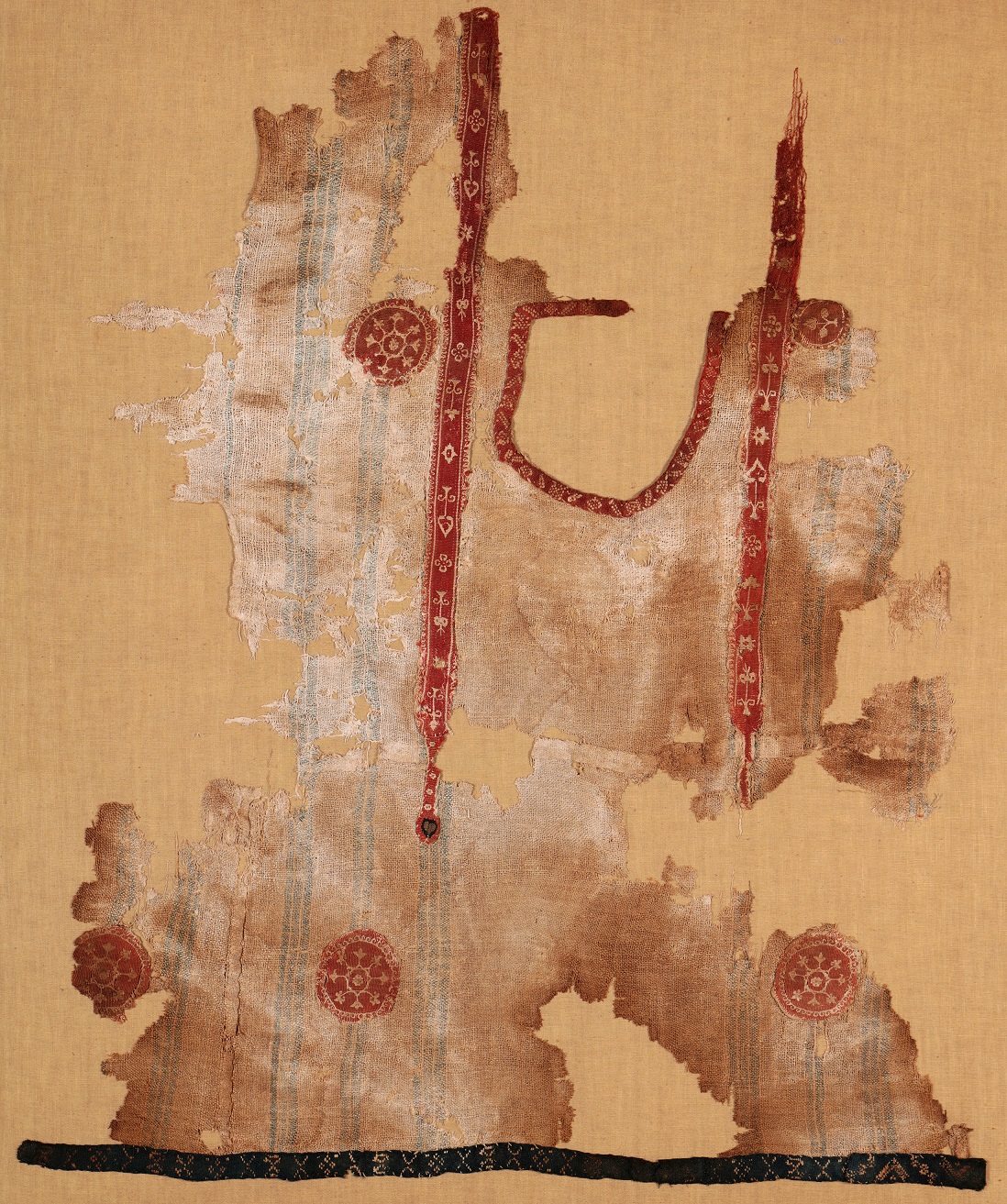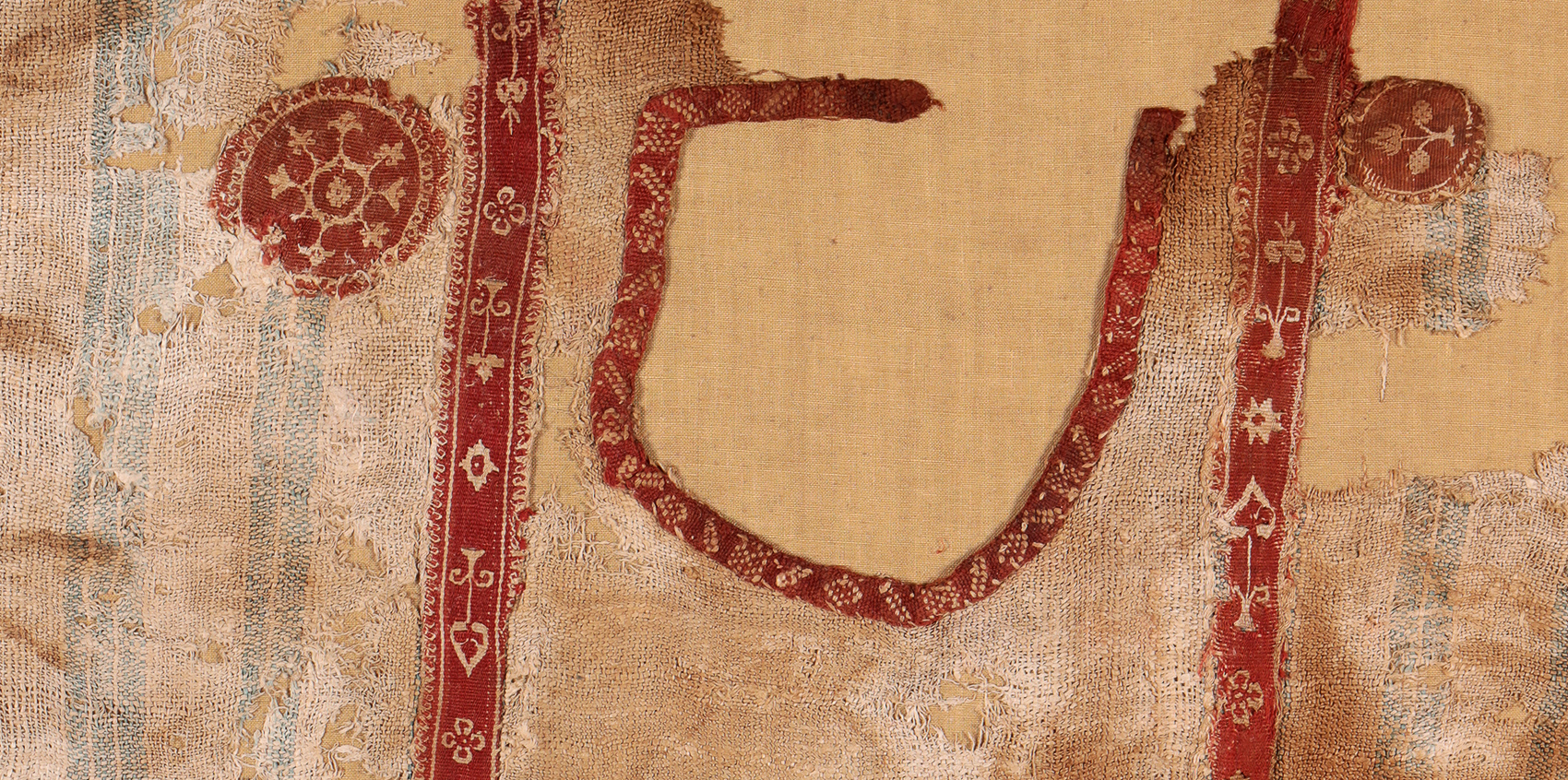Two fine brocaded strips with a geometric design decorate the neckline (in red) and the hem (dark blue). Appliquéd tapestry clavi and orbiculi with a red ground have delicate motifs of stylised plants. In late Antiquity, linen cloth and/or tapestry ornaments were frequently recuperated from other textiles or separately woven to make or decorate a new tunic, especially for children.
Origin:
Egypt
Date:
7th - 9th century
Material:
Linen and wool
Dimensions:
Height of finished tunic: 54 cm; distance shoulder line to tuck: 27.5 cm; tuck: 1.5cm; distance hem to tuck: 27.5 cm; width of front part: 48 cm; width of sleeve: +/- 18 cm; applied band on hem: width 2 cm; orbiculi: +/- 6 cm; clavi: width: 2.2 cm, length: 64 cm; neck opening: 42 cm; distance between clavi: 18 cm
Comparisons:
Staatliche Museen zu Berlin inv. 9028: blue-striped cloth.
Provenance:
Collection Coptic textiles Fill-Trevisiol: donation
Location:
Musée royal de Mariemont
Separately-woven linen and woollen tapestry
I. Ground weave
Warp:
natural-coloured linen S: 11/cm
Weft:
natural-coloured linen S: 11/cm
Weave:
tabby
Other features:
blue stripes on both sides of the neck opening woven in blue dyed linen
II. Tapestry areas
1) Applied orbiculi
2) Clavi
3) Neck opening (cut out and finished with a trimming in supplementary weft brocading)
Warp:
1) natural-coloured linen S2Z: 13/cm
2) natural-coloured linen, paired S: 10/cm
3) red wool S2Z
Weft:
1) red wool S: 54/cm; natural-coloured linen S
2) red wool S: 55/cm; natural-coloured linen S
3) paired red wool S Brocading: paired natural-coloured linen S
Weave:
1-2) weft-faced tabby
Sewing Yarn:
1) S2Z linen
Special techniques:
1-2) slit tapestry

